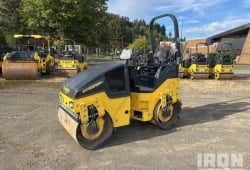Learning Drilling Disasters and How to Avoid Them
6 Min read
)
July 24, 2023
Drilling operations are essential for various industries, including mining, oil exploration, and construction. While a drilling operation can be highly effective and efficient, it also comes with inherent risks that can lead to disastrous consequences. In this comprehensive guide, we will explore the different types of drilling disasters, their causes, and most importantly, how to avoid them. We will also delve into case studies of real drilling disasters, a glimpse into the future of drilling safety, and answer some frequently asked questions to help you understand the subject better.
Types of Drilling Disasters
Blowouts: Uncontrolled Releases of Pressure
Blowouts are one of the most dreaded drilling disasters. They occur when drilling fluids lose containment, leading to uncontrolled releases of pressure from the wellbore. Blowouts can result in fires, explosions, and environmental damage, endangering both workers and nearby communities.
Stuck Pipe: A Common Drilling Problem
A stuck pipe happens when the well drill bit or string becomes immobilized in the hole in the wellbore due to various reasons, such as differential pressure, poor hole cleaning, or geological factors. Addressing stuck pipe incidents requires careful planning and efficient solutions.
Wellbore Stability Issues
Wellbore stability problems arise when the surface of the drilled well becomes unstable due to the interaction between the drilling fluid and the formation. Instability can lead to wall collapses and can be challenging to manage during drilling operations oil production well.
Lost Circulation: When Drilling Fluid Escapes
Lost circulation happens when drilling fluid escapes into the formation instead of circulating back up the hole or wellbore. This can lead to reduced horizontal drilling well efficiency, increased costs, and potential damage to the formation.
Formation Damage: Impact on Productivity
Formation damage occurs when drilling operations negatively affect the reservoir's natural productivity. This can happen due to the invasion of drilling fluids, fines migration, or other factors that hinder the reservoir's ability to produce hydrocarbons natural gas, or minerals.
Causes of Drilling Disasters
Human Errors: A Critical Factor
Many drilling disasters can be attributed to human errors, such as misinterpretation of data, poor decision-making, or inadequate training. Human factors are crucial in drilling safety, and proper training and strict adherence to protocols can significantly reduce the likelihood of disasters.
Equipment Failures: Identifying Weak Links
Equipment failures can lead to catastrophic consequences during drilling operations. Identifying and addressing weak links in the drilling machinery, such drilling equipment such as blowout preventers, wellhead equipment, and drilling bits, is crucial to preventing disasters.
Environmental Factors: Understanding the Risks
Drilling operations are often conducted in challenging environments, such as offshore or remote locations. Understanding and mitigating environmental risks, including weather conditions north sea, and marine life protection, is essential for drilling safety.
Geotechnical Challenges: Knowing the Formation
Each drilling site presents unique geotechnical challenges. Understanding the formation's characteristics, pressure, and geological structures is vital for planning safe drilling operations.
How to Avoid Drilling Disasters
Robust Risk Assessment and Management
A comprehensive risk assessment is the foundation of drilling safety. Identify potential hazards, assess their severity, and develop risk management plans to mitigate the likelihood of accidents.
Adherence to Industry Regulations
The gas drilling operations and industry are heavily regulated to ensure safety and environmental protection. Always, drill to comply with local and international regulations and standards to maintain a safe working environment.
Training and Competency Development
Invest in thorough training programs for all personnel involved in the drilling rig operations. Ensure that everyone is competent in their roles and understands the importance of safety protocols.
Real-Time Monitoring and Data Analysis
Implement advanced monitoring platform technologies to track drilling operations in real time. Analyze data to detect potential issues early and take corrective actions promptly.
Case Studies of Drilling Disasters
Deepwater Horizon: The Tragic Blowout
The Deepwater Horizon incident in 2010 is one of the most infamous drilling disasters in history. A blowout resulted in a massive oil spill, causing extensive environmental damage and loss of lives. This major disaster emphasized the need for robust safety measures and enhanced regulatory oversight in the drilling industry.
Montara Well Blowout: Lessons Learned
The Montara Well blowout in 2009 off the coast of Australia led to a significant oil spill. The incident exposed gaps in drilling safety and emergency response capabilities, prompting industry-wide improvements in offshore drilling practices.
Baglan Bay Gas Rig Disaster
In 1965, the Baglan Bay gas rig disaster occurred off the coast of Wales. The rig experienced a blowout, leading to an explosion and fire on an offshore platform that claimed the lives of several workers. This tragic event resulted in stricter safety regulations for offshore drilling and production operations.
The Future of Drilling Safety
As the world of drilling technology continues to evolve, so does the potential for safer and more efficient drilling operations. Advancements in automation, monitoring technologies, and data analytics are set to revolutionize the drilling industry, significantly reducing the risk of drilling disasters.
Automated systems will take on more significant roles in drilling processes, streamlining operations and minimizing the need for human intervention in hazardous tasks such as drilling mud down. These systems will be equipped with sophisticated sensors and artificial intelligence, allowing those operating them to detect potential risks in real-time and take corrective actions swiftly.
Advanced monitoring technologies will provide drillers with comprehensive insights into the drilling process, enabling them to identify anomalies and potential hazards. Real-time monitoring of drilling parameters, well depth, ground stability, and equipment performance will ensure prompt responses to any unexpected changes or issues.
Data analytics will play a crucial role in predictive maintenance, allowing drilling companies to detect potential equipment failures before they occur. By analyzing vast amounts of data collected during drilling operations, patterns and trends can be identified, enabling timely routine maintenance, and replacement of components to prevent costly breakdowns.
FAQs
What qualifications do drilling personnel need?
Drilling personnel should undergo specialized training and obtain relevant certifications. Basic qualifications include technical knowledge, safety training, and operational experience in drill rig use.
How can stuck pipe incidents be prevented?
Stuck drill pipe well incidents can be prevented through proper well planning, wellbore stability analysis methods, and efficient drilling practices.
What should I do in case of a blowout?
In the event of an initial explosion or a blowout, follow emergency protocols, evacuate if necessary, and seek expert assistance to control the situation.
Are drilling disasters avoidable?
While drilling operations always carry risks, disasters can be minimized through proper planning, safety measures, and adherence to environmental regulations throughout.
How can real-time monitoring improve safety?
Real-time monitoring provides instant data on drilling operations, allowing prompt identification and mitigation of potential hazards.
What is the role of artificial intelligence in drilling safety?
Artificial intelligence can analyze vast amounts of data to detect patterns and potential risks, enabling proactive safety measures.
Conclusion
Drilling disasters can have devastating consequences, but with proper planning, adherence to safety protocols, and the adoption of advanced technologies, they can be significantly minimized. The drilling industry must prioritize safety to protect workers, the environment, and surrounding communities. By learning from past disasters and embracing innovation, we can move toward a safer and more sustainable future for drilling operations.















